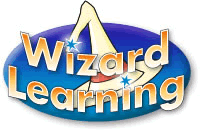We have created this audiovisual presentation to help you understand this topic:
The three certainties of a trust
For a trust to be valid, there must be three certainties: certainty of words, certainty of subject matter and certainty of objects.
Words – The words must unmistakably show the intentions of the trust. No special words are necessary but using words such as “on trust for…” would provide clarity.
Subject – The property subject to the trust must be clearly specified.
Object – The objects of a trust, i.e. its beneficiaries, must be certain. This can be achieved by specifically naming each beneficiary or describing a class or classes of beneficiaries. Where a trust is being used exclusively for charitable purposes, there is no need to provide for certainty of beneficiaries. Where beneficiaries are described in a trust, the wording should be specific enough to avoid conflic...
Shortened demo course. See details at foot of page.
... 2009
This Act came into force on 6 April 2010 and applies to all lifetime trusts created after that date. The new Act provides that:
A single 125 perpetuity period which will always apply, although individual trust wording may provide for a shorter period
Where the perpetuity period is difficult to establish, the trustees can execute a deed providing that the perpetuity period will become a fixed 100 years
Trustees are able to accumulate income for the entire trust period
The accumulation period for charitable trusts is now 21 years. This is to ensure that trust income is regularly used for the charitable purpose for which the trust was set up (previously it was indefinitely)
In the case of will trusts, where death occurred prior to this Act coming into force, or in the case where death occurred after the Act came into force but the will was made prior to this date, the existing perpetuities and accumulation periods apply.


